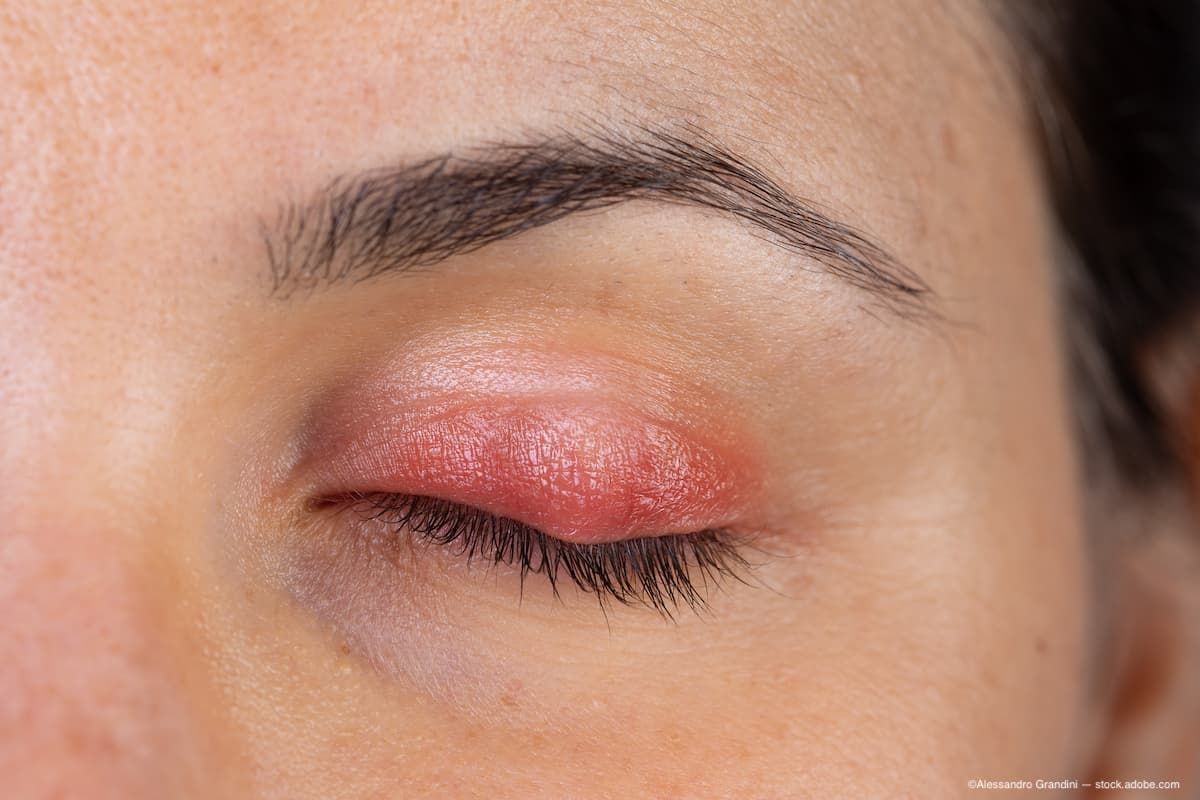Article
Dr. Mali's top 5 stories in ophthalmology for 2018
Author(s):

Dr. Mali

It’s that time of the year again when I reflect on such an exciting and dynamic year in ophthalmology! Here are my top 5 most significant stories in ophthalmology for 2018:
1) Innovations in the treatment of retinal diseases soars to new heights
As the prevalence of exudative age-related macular degeneration (wet AMD), retinal vein occlusion (RVO), and diabetic macular edema (DME) continues to climb worldwide, the ophthalmological industry has responded with amazing innovation in drug R&D, drug delivery systems, and new approved indications.
Here are the main highlights:
- a) Genentech continues to impress with several exciting treatments in the pipeline. Faricimab – the first bispecific antibody designed for the eye – dosed every four months demonstrated sustained vision outcomes compared to monthly ranibizumab for patients with wet AMD. In addition, further Phase II data for the Port Delivery System with ranibizumab (PDS), dosed every six months or longer, showed that visual acuity and anatomical outcomes in wet AMD are comparable to ranibizumab dosed every four weeks. Global Phase III studies in Genentech and Roche’s ophthalmology portfolio have commenced – two for faricimab in DME and one for the PDS in wet AMD. Overall, Genentech has focused on lowering the treatment burden in wet AMD, through novel mechanisms and long-acting delivery systems, and has the potential to address under-treatment and improve patient outcomes.
- b) Regeneron’s Eylea demonstrated positive top-line results for the treatment of patients with moderately severe to severe non-proliferative diabetic retinopathy without diabetic macular edema (PANORAMA). Eylea continues to be a major force in the treatment of wet AMD, DME, and RVO.
- c) Novartis announced additional brolucizumab Phase III results from year two that reaffirmed its positive year one findings. Brolucizumab met its primary endpoint of non-inferiority versus aflibercept in best corrected visual acuity (BCVA) and exhibited superiority in key retinal outcomes at year one (48 weeks). Secondary endpoints at year two (96 weeks) reaffirmed superiority of brolucizumab 6 mg in reduction of retinal fluid, an important marker of disease activity in wet AMD. Additionally, of the patients on brolucizumab 6 mg who successfully completed year one on a 12-week dosing interval, 82% in HAWK and 75% in HARRIER were maintained on a 12-week dosing interval in year two. Brolucizumab will likely achieve FDA approval in 2019 and will be an exciting new option for the treatment of wet AMD.
- d) Allergan’s Abicipar Pegol met the pre-specified criteria and primary endpoint in both SEQUOIA and CEDAR clinical trials, signaling the possibility of fixed every 12 week dosing for patients with wet AMD. Likely seeking FDA approval in 2020, Abicipar Pegol will be the successful leading pioneer in a novel class of DARPin (Designed Ankyrin Repeat Proteins) molecules and may usher in a dynamic family of molecules to treat retinal vascular diseases with multiple targets.
- e) Alimera Sciences reported significant increase in ILUVIEN utilization this year worldwide, demonstrating the excellent long-term efficacy and unique drug delivery mechanism with continuous microdosing of fluocinolone acetonide to treat DME.
2) Artificial Intelligence (AI) has arrived and is here to stay
Described in one of my previous articles as one of the 5 greatest ophthalmic innovations of the 21st century, telemedicine represents a new frontier of our field focusing on two main principles: prevention and early disease detection.
While I believe artificial intelligence will never replace doctors, I do believe AI will have a significant role in medicine now and in the future. Leading the way, the ForeseeHome (FSH) technology created by Notal Vision is the flagship telemedicine AI technological device in ophthalmology today and has become the new standard of care in age-related macular degeneration (AMD) monitoring.
Notal recently announced that the FDA has granted breakthrough device designation for its pioneering patient-operated Home Optical Coherence Tomography (OCT) System. This device could revolutionize the way retinal specialists manage wet AMD.
In addition, IDx-DR is approved for use of autonomous detection of diabetic retinopathy in diabetic patients utilizing the Topcon NW400 fundus camera.
Finally, Tilak has created Odysight, a mobile application medical game dedicated to the monitoring of patients with chronic eye diseases. AI is being incorporated into the medical field and specifically ophthalmology at a rapid rate and is having a significant benefit to both patients and healthcare professionals.
3) American Board of Ophthalmology (ABO) delivers excellent updates to the Maintenance of Certification (MOC) process for Board Certification
Under the incredible leadership of Dr. George Bartley and his team, the ABO has developed impressive new initiatives to improve the board certification process and MOC. Here are just a few highlights of recent note:
- a) No PIMS: The activities known as Practice Improvement Modules or “PIMs” will be removed from the ABO MOC requirement. Instead, starting in 2019, diplomates have a number of new ways to address this part of the MOC. The most notable change is the option to read designated Quality Improvement articles and answer questions through the article-based section of the Quarterly Questions program. Another new option is to choose an approved CME activity from a menu called the ACCME Program and Activity Reporting System (PARS). Diplomates can also choose to design an independent project, use IRIS Registry/their EHR data to develop a project, or participate in a collaborative project at their institution through the Multi-Specialty Portfolio Program. This new creative initiative provides more options to diplomates and allows for flexibility.
- b) More Value from Quarterly Questions: The ABO is continuously adding to the value of the Quarterly Questions program. The program remained quite popular in 2018 – 9 out of 10 participants say they would recommend it to a colleague. The ABO will also make patient safety-themed articles and questions available to help diplomates satisfy the patient safety requirement of MOC. Of note, completing Quarterly Questions will also be worth 8 CME/Self-Assessment CME (SACME) credits in 2019. Quarterly Questions has allowed diplomates to experience both lifelong learning and ongoing clinical/professional assessment via participation in this exceptional and modern program.
- c) No DOCK or PORTs: Demonstration of Ophthalmic Cognitive Knowledge (DOCK) and Periodic Ophthalmic Review Test (PORT) no longer exist in MOC. Since the Quarterly Questions program has fully replaced the DOCK (the last administration of the DOCK occurred on December 1, 2018), both the DOCK and PORTs will be removed from the MOC requirement in board certification.
4) American Academy of Ophthalmology (AAO) unveils plans to build new Museum of Vision
Announced recently at the AAO 2018 Annual Meeting, the American Academy of Ophthalmology unveiled plans to construct the world’s first public museum dedicated to vision and eye health. The Museum of Vision will be located in San Francisco.
This free, public museum and education center will introduce the world to the science of sight and to the field of ophthalmology dedicated to protecting it. It will be the only publicly accessible, comprehensive collection of ophthalmic artifacts on permanent display in the United States.
The Academy is undertaking this effort to highlight the rich history of medical and surgical eye care and to help people understand their own eye health. The opening of a museum in San Francisco enables the Academy to showcase its collection of more than 38,000 artifacts, books, and instruments. These treasures have been collected for more than 30 years as the Museum of Vision, but opportunities to view them are limited to a yearly exhibit at the Academy’s annual conference.
Some of the collection can be also viewed by appointment at the Academy’s headquarters, located in San Francisco. The Academy hopes that bringing its extensive collection out in the open for the public to experience will help people understand their own eye health and what ophthalmologists do to protect their sight, inspiring the next generation of eye physicians and surgeons.
5) Healthcare law reform has started to take shape
Rounding out my top 5 stories is a compilation of small changes to existing healthcare regulations.
While complete healthcare reform has taken a backseat to other legislative priorities, there have been some minor changes in healthcare in 2018. While it remains to be seen if complete repeal of the Affordable Care Act (ACA) or continued modifications/adjustments to existing healthcare law will be the path forward, President Trump and Congress continue to work diligently on a broad solution for healthcare reform.
There were some notable changes this year including repealing the ACA individual mandate and allowing Medicare Advantage plans to use step therapy for Part B drugs beginning January 1, 2019.
Ultimately, it will take the efforts of all of us as Americans with different backgrounds and skills to solve this issue. I also have some ideas on how to develop our healthcare policy that will be satisfactory to all sides-patients, physicians, hospitals, pharmaceutical companies, insurance companies, and our government. So, if President Trump or any of our politicians from Congress are reading this article, feel free to call me.
That being said, we must have stabilization of the United States healthcare system in order to allow all of us as physicians/ophthalmologists to continue to provide the best healthcare delivery for our patients.
2018 was definitely a year to remember in the history of ophthalmology and provides momentum to an exciting 2019. I look forward to keeping you updated throughout 2019 and beyond!
Disclosures:
Joshua Mali, MD, is a board certified ophthalmologist and award-winning vitreoretinal surgeon at The Eye Associates, a private multispecialty ophthalmology practice in Sarasota, Florida. He can be reached at 941-923-2020 or jmali@theeyeassociates.com. Dr. Mali’s relevant financial disclosures include the following: Regeneron (consultant, speaker, stock shareholder, research funding), Genentech/Roche (consultant, speaker), Notal Vision Inc. (consultant, speaker), Alimera Sciences (consultant, speaker, stock shareholder), Allergan (consultant, research funding), Sun Pharmaceutical Industries Inc. (consultant, speaker), Medical Director of Macular Degeneration Association (consultant, speaker), and Founder & CEO of Mali Enterprises.
References:
1. Mali, Joshua and Mali, Yasmin. What ophthalmologists are thankful for: The 5 greatest ophthalmic innovations of the 21st century. Ophthalmology Times. November 24, 2016.
http://ophthalmologytimes.modernmedicine.com/ophthalmologytimes/news/what-ophthalmologists-are-thankful
2. Mali, Joshua. Dr. Mali's top 5 predictions in ophthalmology for 2017. Ophthalmology Times. December 24, 2016.
http://ophthalmologytimes.modernmedicine.com/ophthalmologytimes/news/dr-malis-top-5-predictions-ophthalmology-2017?page=0,2
3. https://eyewire.news/articles/aao-announces-4-million-gift-to-aid-construction-of-a-public-museum-dedicated-to-vision-and-eye-health
4. McGowan, Meghan. American Board of Ophthalmology (ABO). Email correspondence. November 9, 2018.
5. Genentech Press Release. New Stairway study data shows potential for extended durability with Faricimab in wet AMD. October 27, 2018.
6. Novartis Press Release. https://www.novartis.com/news/media-releases/two-year-data-novartis-brolucizumab-reaffirm-superiority-versus-aflibercept-reducing-retinal-fluid-patients-namd
Newsletter
Don’t miss out—get Ophthalmology Times updates on the latest clinical advancements and expert interviews, straight to your inbox.





